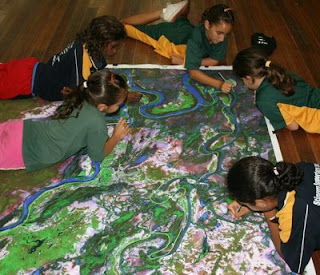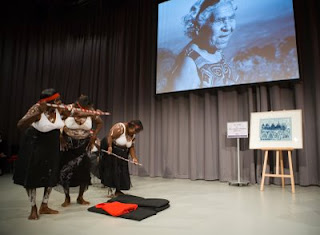On the Pacific islands of Samoa drone technology is used in a coconut tree survey to forecast more accurately yield and production of virgin coconut oil.
In 2015 the Samoan agricultural non-governmental organisation Women in Business Development Incorporated (WIBDI) realised that it needed a new way to collect and organise comprehensive data from associated farms. The organisation helps local rural families actively engage through fair-trade in the niche market of organic products. They were wondering what would make it easier to carry out organic standards inspections and conduct counts of certain crops, in particular coconut trees.
Coconut is Samoa’s most important renewable resource and export product. The country exports copra coconut oil, virgin coconut oil, coconut cream, desiccated coconut, coconut fibre (coir) and shell products mainly to Australia and New Zealand. WIBDI is the largest exporter of virgin coconut oil in Samoa and its main buyer is The Body Shop, which is based in the United Kingdom.
In search for answers to the data collection problem, WIBDI turned to Samoan tech-services company Skyeye for help. Skyeye’s experts explained to them that the technology of unmanned aerial vehicles (UAVs) – also known as drones – was the perfect solution. It is cheaper than a manned aircraft and capable of collecting higher-resolution imagery than those that are available from a satellite.
After technicians download images from the UAV, they process them into orthomosaics: stitched-together images that have been digitally corrected for distortion, so that they can be overlaid onto a map. They then open these image layers in a free, open source GIS computer programme, known as QGIS. In QGIS, they are able to digitise key farm features – and the high resolution drone imagery clearly shows individual coconut trees, allowing them to conduct a visual count of total tree numbers.
Skyeye uses a GIS feature known as a Web Feature Service (WFS), which allows them to grant users access to its geoserver – an open source server made for sharing geospatial data. With WFS, users are able to download individual layers of information, such as the layer containing information about farm’s coconut trees. With these geospatial data farmers then can make their own changes and updates to the digital map. ‘In this way, Skyeye is able to divide the labour and make the process of analysing the drone imagery faster and more centralised within one system,’ says Reynolds.
While the drones have been a boon to WIBDI, they have not been entirely trouble-free. According to Reynolds, Skyeye’s biggest challenge has been locating suitable landing areas, as the drone requires an open area free of vegetation to safely land after completing a mission – and such an area can be hard to find on a tropical island. ‘Google’s satellite imagery in Samoa is outdated. Sometimes, we found that the best solution is to ask the locals in the village where we can find suitably clearing,’ he describes.
Maintaining a strong radio link to the drone was another hassle due to tall coconut trees, which can obstruct the signal and result in the drone not capturing images. ’For this, we shortened the range of the drone’s flight path, or found higher ground to launch it from,’ explains Reynolds.
By the end of January 2016, Skyeye had mapped 10,480 hectares by drone and counted 138,180 coconut trees. The drone survey of all 558 farms in WIBDI’s network should be completed by April 2016. In the future, Skyeye Samoa hopes to extend the tree-counting process it has developed for WIBDI. ’As Samoa and the Pacific continue to realise how drone technology can be used in various industries, especially in agriculture, the region will become better able to reach large markets and keep up with modern advancements,’ says Reynolds.
In 2015 the Samoan agricultural non-governmental organisation Women in Business Development Incorporated (WIBDI) realised that it needed a new way to collect and organise comprehensive data from associated farms. The organisation helps local rural families actively engage through fair-trade in the niche market of organic products. They were wondering what would make it easier to carry out organic standards inspections and conduct counts of certain crops, in particular coconut trees.
Coconut is Samoa’s most important renewable resource and export product. The country exports copra coconut oil, virgin coconut oil, coconut cream, desiccated coconut, coconut fibre (coir) and shell products mainly to Australia and New Zealand. WIBDI is the largest exporter of virgin coconut oil in Samoa and its main buyer is The Body Shop, which is based in the United Kingdom.
In search for answers to the data collection problem, WIBDI turned to Samoan tech-services company Skyeye for help. Skyeye’s experts explained to them that the technology of unmanned aerial vehicles (UAVs) – also known as drones – was the perfect solution. It is cheaper than a manned aircraft and capable of collecting higher-resolution imagery than those that are available from a satellite.
Open source server
For its mapping work, Skyeye uses a fixed wing professional mapping UAV, which is capable of covering large areas in a single autonomous flight. ’The drone allows us to capture images of farms that are not easily accessible and it gives us the flexibility to fly whenever we want as long as the weather permits it. Being able to capture up-to-date imagery has been a massive benefit to this digitisation project,’ says Skyeye’s Geographic Information System (GIS) technician Ephraim Reynolds.After technicians download images from the UAV, they process them into orthomosaics: stitched-together images that have been digitally corrected for distortion, so that they can be overlaid onto a map. They then open these image layers in a free, open source GIS computer programme, known as QGIS. In QGIS, they are able to digitise key farm features – and the high resolution drone imagery clearly shows individual coconut trees, allowing them to conduct a visual count of total tree numbers.
Skyeye uses a GIS feature known as a Web Feature Service (WFS), which allows them to grant users access to its geoserver – an open source server made for sharing geospatial data. With WFS, users are able to download individual layers of information, such as the layer containing information about farm’s coconut trees. With these geospatial data farmers then can make their own changes and updates to the digital map. ‘In this way, Skyeye is able to divide the labour and make the process of analysing the drone imagery faster and more centralised within one system,’ says Reynolds.
Locating landing areas for drones
To further speed up the process of mapping, Skyeye shows farmers images of their farms from the air so they can draw their boundaries. By estimating the age of the palm trees on each of the farmer’s property, WIBDI is able to forecast the yield and production of virgin coconut oil. These estimates can in turn be used to assess the feasibility of future business ventures, and to make more accurate estimates of expected annual profits.While the drones have been a boon to WIBDI, they have not been entirely trouble-free. According to Reynolds, Skyeye’s biggest challenge has been locating suitable landing areas, as the drone requires an open area free of vegetation to safely land after completing a mission – and such an area can be hard to find on a tropical island. ‘Google’s satellite imagery in Samoa is outdated. Sometimes, we found that the best solution is to ask the locals in the village where we can find suitably clearing,’ he describes.
Maintaining a strong radio link to the drone was another hassle due to tall coconut trees, which can obstruct the signal and result in the drone not capturing images. ’For this, we shortened the range of the drone’s flight path, or found higher ground to launch it from,’ explains Reynolds.
By the end of January 2016, Skyeye had mapped 10,480 hectares by drone and counted 138,180 coconut trees. The drone survey of all 558 farms in WIBDI’s network should be completed by April 2016. In the future, Skyeye Samoa hopes to extend the tree-counting process it has developed for WIBDI. ’As Samoa and the Pacific continue to realise how drone technology can be used in various industries, especially in agriculture, the region will become better able to reach large markets and keep up with modern advancements,’ says Reynolds.
About the authors:
Ephraim Reynolds (ephraim@skyeye.ws) is GIS technician at Skyeye. Faumuina Felolini Tafuna’i (flyinggeesepro@gmail.com) is media specialist at Women in Business Development Inc. WIBDI.Source:
Republished with permission from ICT Update, issue 82, April 2016
Follow @UAV4Ag on Twitter
Counting #coconut trees with #drones in Western #Samoa https://t.co/So8iPiwtze via @ict_update #Pacific #SIDS #sUAS pic.twitter.com/T0yiDfTtxX— Drones 4 Agriculture (@UAV4Ag) June 4, 2016








